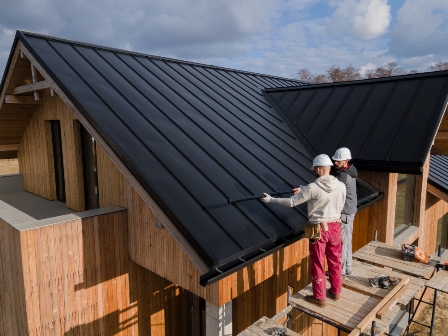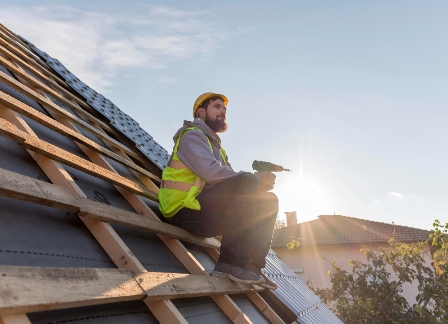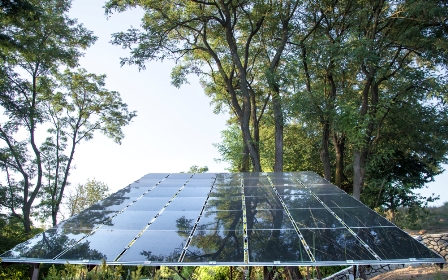Choosing the right roofing material is a crucial decision that significantly impacts the aesthetics, functionality, and longevity of your home. Your roof is not just a protective layer; it’s a design element that contributes to the overall curb appeal. In this guide, we will walk you through the essential factors to consider when selecting the perfect roofing material for your home.
Assessment of Climate
When it comes to roofing, climate is a critical factor that should guide your decision-making process. Different regions experience varying weather conditions, from scorching heat to freezing temperatures.
Hot and Sunny Climates
In areas with hot and sunny climates, materials with high solar reflectance and thermal emittance are preferable. Consider options like metal roofing or reflective tiles to minimize heat absorption.
Cold and Snowy Climates
For regions with cold winters and heavy snowfall, choose roofing materials that can withstand the weight of snow and provide effective insulation. Metal, asphalt, and slate are often suitable choices.
Rain-Prone Areas
In areas with frequent rainfall, opt for materials with excellent water resistance. Clay tiles, slate, or metal roofing are durable options that can withstand moisture without deteriorating.
Budget Considerations
Setting a budget is a crucial step in any home improvement project, and roofing is no exception. While it’s tempting to go for the most expensive option, it’s essential to find a balance between quality and affordability.
Durability and Longevity
Your roof is a long-term investment, and choosing a durable material is paramount. Consider the lifespan of different roofing materials to ensure your choice aligns with your long-term goals.
Asphalt Shingles
Asphalt shingles, while cost-effective, typically have a lifespan of 15-30 years. They are a popular choice for their affordability and easy installation.
Metal Roofing
Metal roofing is renowned for its durability, with a lifespan of 40-70 years. While it may have a higher upfront cost, its longevity often justifies the investment.
Wood Shakes
Wood shakes offer a unique aesthetic but require more maintenance. Their lifespan is around 20-40 years, depending on the wood type and climate.
Slate Roofing
Slate is a premium option with a lifespan exceeding 100 years. While expensive, it provides unmatched durability and a timeless appearance.
Aesthetics and Architectural Style
The visual appeal of your roof contributes significantly to the overall look of your home. Consider how different roofing materials complement various architectural styles.
Traditional Styles
For traditional homes, materials like asphalt shingles or wood shakes can enhance the classic aesthetic.
Modern Architecture
Metal roofing and flat roof materials are often favored for modern homes, providing a sleek and minimalist appearance.
Energy Efficiency
Roofing plays a pivotal role in the energy efficiency of your home. Choose materials that contribute to insulation and reduce the overall energy consumption of your household.
Cool Roofing Options
Cool roofing materials, such as reflective tiles or coatings, can help maintain a lower temperature in your home, reducing the need for excessive air conditioning.
Maintenance Requirements
Consider the time and effort you are willing to invest in maintaining your roof. Some materials require more attention than others.
Low Maintenance Options
Metal roofing and concrete tiles are examples of low-maintenance choices that retain their quality with minimal upkeep.
Regular Inspection
Regardless of the material, routine inspections are crucial to identifying and addressing potential issues before they become major problems.
Installation Complexity
The complexity of installation varies among roofing materials. While some materials can be installed by homeowners with DIY skills, others require professional expertise.
DIY-Friendly Materials
Asphalt shingles are often DIY-friendly, making them a popular choice for homeowners looking to save on installation costs.
Professional Installation
Metal roofing, slate, and tile materials typically require professional installation to ensure proper sealing and longevity.
Environmental Impact
As environmental consciousness grows, so does the importance of choosing eco-friendly roofing options. Consider the environmental impact of different materials.
Recyclable Materials
Metal roofing is highly recyclable, making it an environmentally friendly choice. Some asphalt shingles also have recycling options.
Sustainable Choices
Wood shakes sourced from sustainable forests and recycled rubber roofing tiles are eco-conscious alternatives.
Local Building Codes and Regulations
Before finalizing your decision, be aware of local building codes and regulations. Non-compliance can result in costly adjustments and legal issues.
Permit Requirements
Certain roofing materials may require permits, so it’s essential to check with local authorities before starting your project.
Historical Districts
In historical districts, there may be specific guidelines on the types of materials allowed to preserve the area’s architectural integrity.
Warranty and Insurance
Protect your investment by understanding the warranties and insurance coverage associated with your chosen roofing material.
Manufacturer Warranties
Different manufacturers offer varying warranties. Compare the terms and coverage to make an informed decision.
Insurance Considerations
Inform your insurance provider about your roofing project to ensure that your coverage aligns with the new installation.
Popular Roofing Materials
Now, let’s delve into the specifics of some popular roofing materials, each with its unique characteristics and considerations.
Asphalt Shingles
Asphalt shingles are a cost-effective and versatile option, available in various styles and colors. They are easy to install and suitable for most residential applications.
Metal Roofing
Metal roofing comes in various materials like steel, aluminum, and copper. It is durable, lightweight, and reflects sunlight, contributing to energy efficiency.
Wood Shakes
Wood shakes provide a natural and rustic appearance. However, they require more maintenance and may not be suitable for fire-prone areas.
Slate Roofing
Slate is a premium, natural stone material known for its elegance and durability. It is, however, heavy and may require additional roof support.
Consulting with Professionals
While researching is valuable, consulting with roofing professionals is crucial to making the right decision.
Roofing Contractors
Experienced roofing contractors can assess your home’s specific requirements and recommend the most suitable materials.
Architects and Designers
Architects and designers can offer valuable input on how different roofing materials align with your overall home design.
FAQs (Frequently Asked Questions)
A: We recommend inspecting your roof at least twice a year, ideally in the spring and fall, to identify and address any issues promptly.
A: No, with proper insulation, metal roofs are not significantly noisier than other roofing materials during rain or hailstorms.
A: While it’s possible in some cases, it’s generally not advisable. Removing the old roof allows for proper inspection and ensures a more secure installation.
A: The lifespan of asphalt shingles typically ranges from 15 to 30 years, depending on factors like climate and maintenance.
A: Opt for cool roofing materials, ensure proper insulation, and consider adding reflective coatings to enhance energy efficiency.
Conclusion
Choosing the perfect roofing material for your home is a decision that requires careful consideration of various factors. From climate and budget to aesthetics and environmental impact, each element plays a crucial role in ensuring the longevity and functionality of your roof. By weighing these considerations and seeking professional advice, you can make an informed decision that enhances the beauty and resilience of your home.






